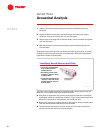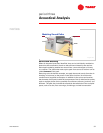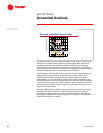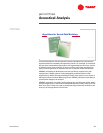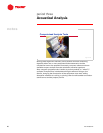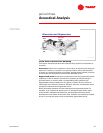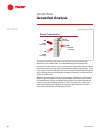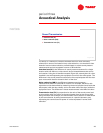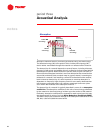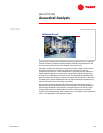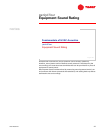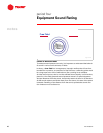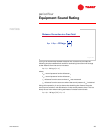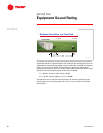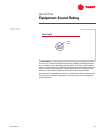
44 TRG-TRC007-EN
notes
period three
Acoustical Analysis
Absorptive materials work by converting acoustical energy into heat energy.
The absorbed energy (W
a
) is the portion of the incident sound energy (W
i
)
that is neither transmitted through the material nor reflected off the material.
The absorptivity of a material depends on several factors, including thickness,
frequency of the sound, and whether there is a reflective surface located behind
the absorptive material. Materials that are porous (such as open cell foam) or
fibrous (such as fiberglass insulation) are more absorptive than materials that
are smooth and dense (such as sheet metal or gypsum board). Increasing the
thickness of a material, and installing a reflective surface behind the material,
both increase its absorptivity. It is also important to note that absorption is
dependent on frequency. High-frequency sound is more easily absorbed than
low-frequency sound because it has a shorter wavelength and more cycles
occur within the thickness of the absorptive material.
The absorptivity of a material is typically described in terms of an absorption
coefficient. The absorption coefficient is the ratio of sound energy absorbed
by the material to the sound energy incident upon the surface of the material.
Preferably, absorption coefficients are reported for each octave band, but may
also be expressed in terms of a single Noise Reduction Coefficient (NRC).
The NRC is simply the arithmetic average of the absorption coefficients for the
250, 500, 1,000 and 2,000 Hz octave bands.
Absorption
W
W
i
i
incident
incident
sound energy
sound energy
W
W
t
t
transmitted
transmitted
sound energy
sound energy
reflected
reflected
sound energy
sound energy
W
W
r
r
W
W
a
a
absorbed
absorbed
sound energy
sound energy
Figure 49



